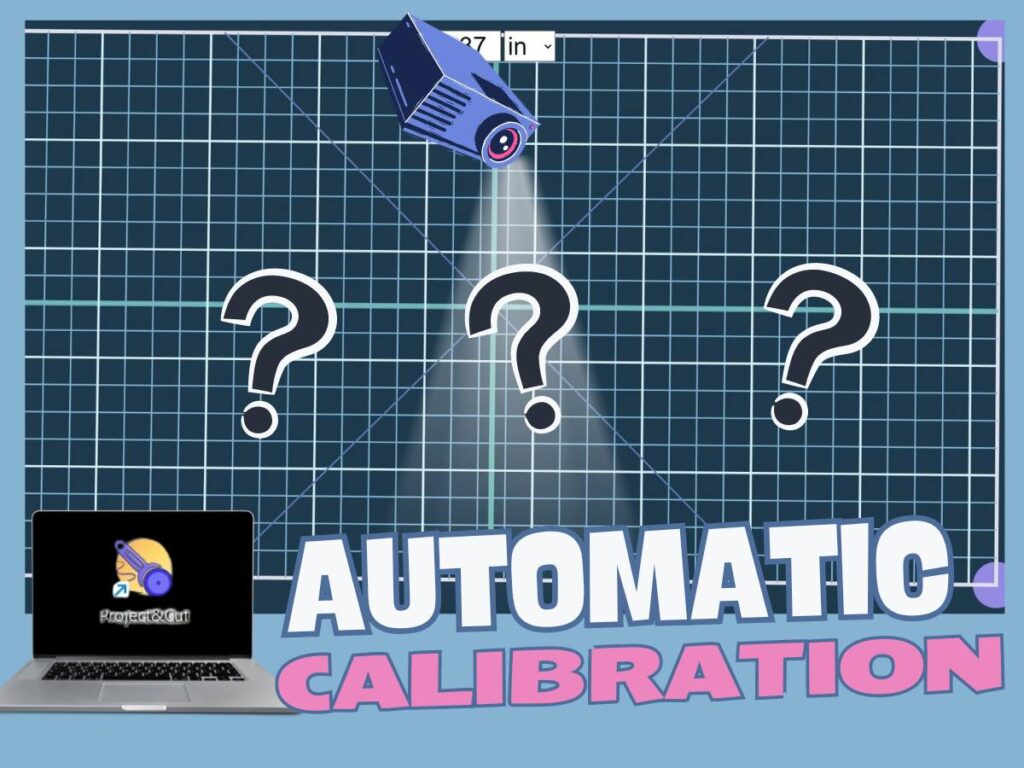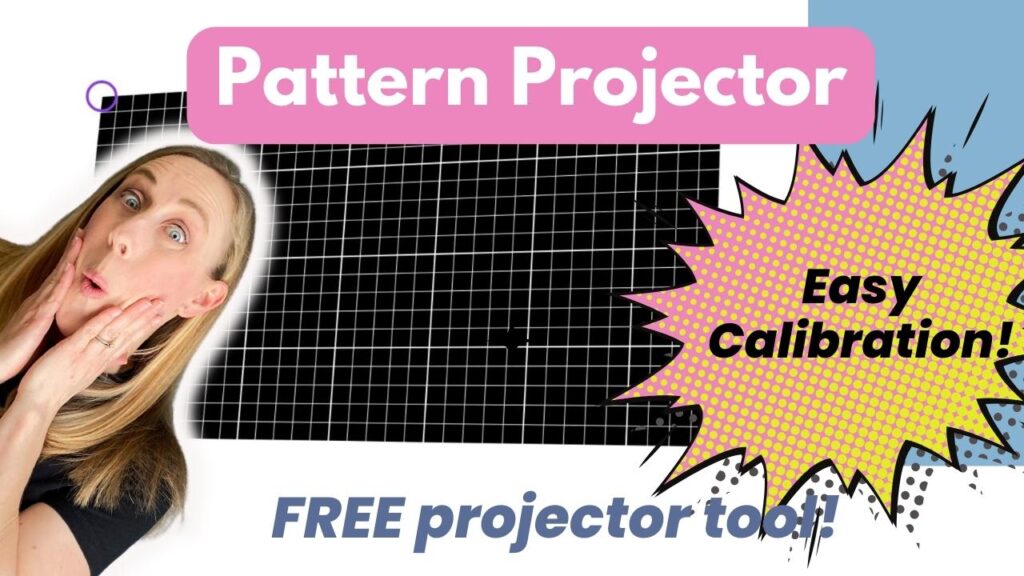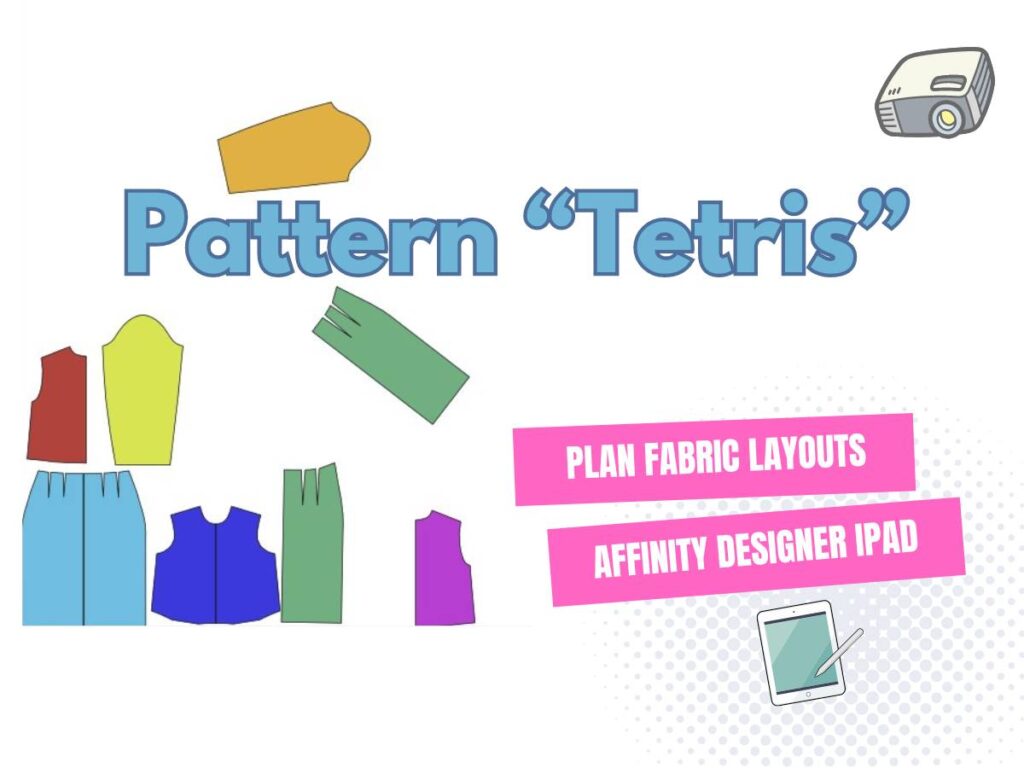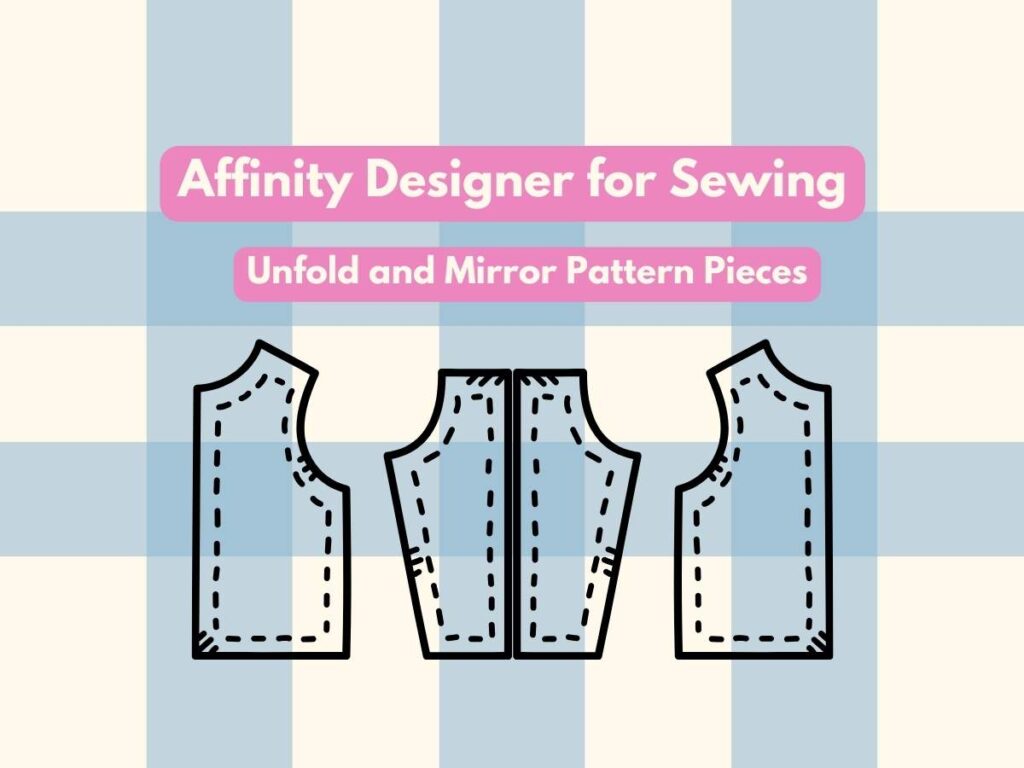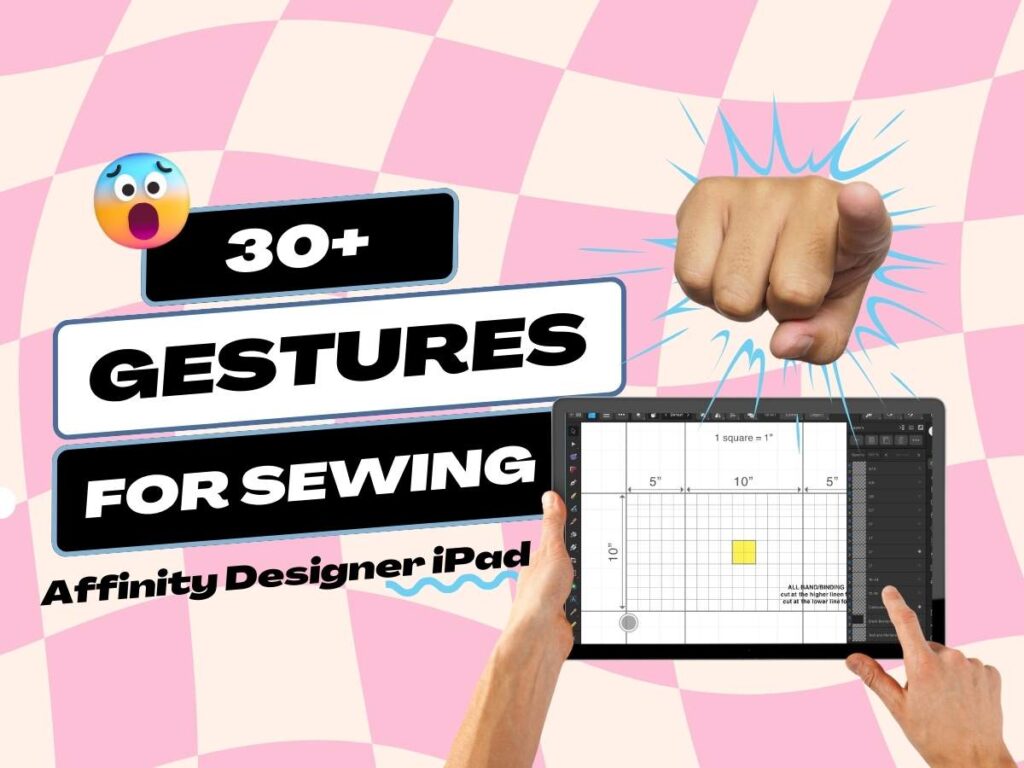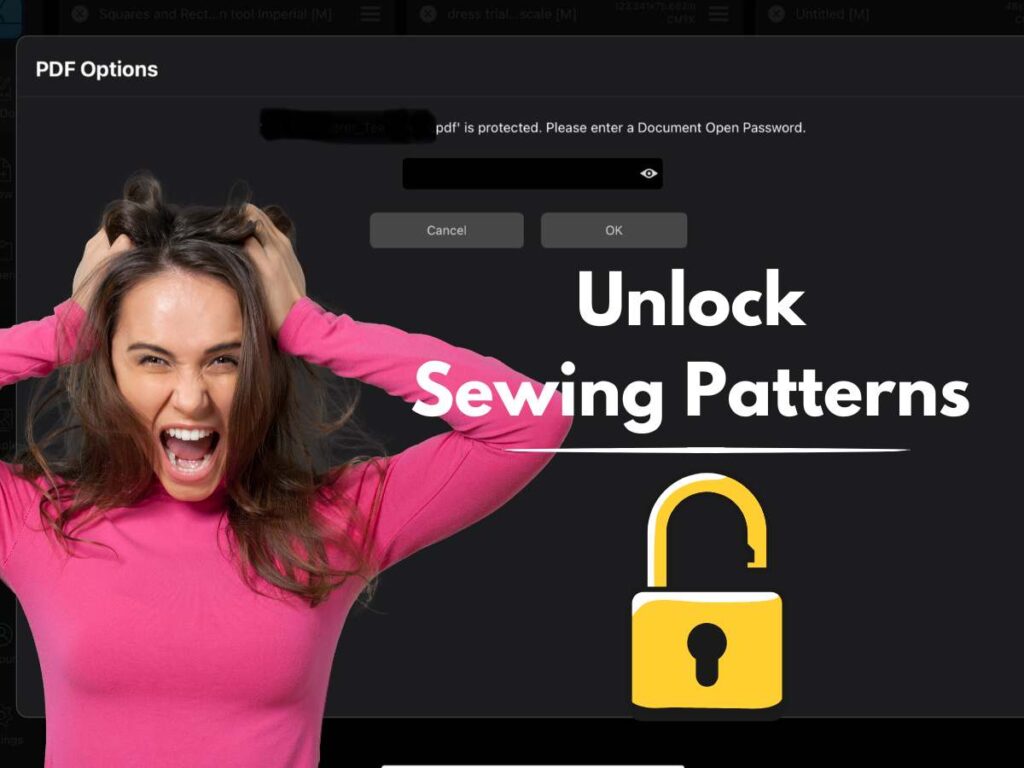Last updated on November 30th, 2023 at 10:39 pm
*This post may contain affiliate links and we may earn a small commission if you click on them.
Yes! No computer needed! You can pattern project directly to your projector from your phone! There are many good reasons to use a phone or tablet when pattern projecting.
Using a phone for pattern projecting is a convenient way to have a wireless display. It is highly mobile and can be taken anywhere! And it doesn’t require a computer to sew!
Let’s get started learning how to use a phone or tablet to sew!
Topics covered:
- How to Use Screen Mirror, MiraCast, or Chrome Cast
- Google Drive and DropBox for PDF pattern storage
- Xodo
- Ensuring Accurate Zoom
- Reverse Colors
- How to Annotate Patterns on Your Phone
HDMI, Screen Mirror, MiraCast, Chromecast, or other WiFi Casting
One of the things that makes a phone or tablet useful is that you do not need to connect using a cable. Most phones and tablets can connect wirelessly using screen mirror, Miracast, or Chrome Cast. If you are unfamiliar with these then read on to see what would work best for you and your sewing setup! Don’t forget to always turn your phone into landscape mode AFTER you open the Xodo app. This will give you the biggest possible screen size.
HDMI
You can connect a phone or tablet to a projector using an HDMI cable. Most phones and tablets will not have an HDMI port, so you will need an adapter.
| Preview | Product | Rating | Price | |
|---|---|---|---|---|
|
|
MHL Micro USB to HDMI Cable Adapter, MHL 5pin… | 302 Reviews |
$8.99 |
Buy on Amazon |
Last update on 2024-05-08 / Affiliate links / Images from Amazon Product Advertising API
Screen Mirror
Screen mirror is an option available on iPhones and iPads. Screen mirror is a great option that is supported by many projectors, including the AcroJoy 9000. Turn on the projector and look for a “screen mirror” option for sources. Select the “screen mirror” option, then return to your iPhone or iPad.
Screen mirror can be found on the iPhone by swiping down from the top right corner to reveal the control panel screen. Select the button with the two rectangles on top of each other. This will open the available screens to mirror to. The projector may be named something odd. If nothing else is available, that is probably it. Click it and it should connect. When it is connected a check mark should appear. You can now navigate on your phone and it will show on the screen.
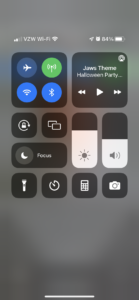
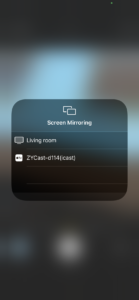
Open the Xodo app and open the calibration document or another pattern. Once you are in the app, remember to turn the phone to landscape. This will give you a bigger image than leaving your phone in portrait mode.
Miracast
Miracast is aimed to be cross-platform and work like a wireless HDMI cable. Miracast works on devices running Windows 8.1 or later. Most Android phones and tablets are Miracast capable. Miracast can also work on computers.
Miracast can be used on a phone or tablet with a projector that has Miracast capability built-in. Follow the instructions that come with your projector to connect your device.
Chromecast
Chromecast can turn any device into a wireless display. This means that you can connect your computer or laptop to a Chromecast device and wirelessly project to your projector.
Chromecast can work on Android phones and tablets. It can also connect to Windows and Mac computers through the Chrome internet browser.
If you are using an Apple phone or iPad, you will be unable to mirror your screen without a paid app. 🙁 Although Chromecast will cast from the YouTube and Netflix without a paid app.
Make sure your Chromecast is setup and linked to your WiFi before trying to cast to your projector.
To setup a Chromecast device, you will need to download the “Goggle Home App”. Walk through the steps and you should be good to go.
This is a great option for projectors that are not Wi-Fi enabled. This will turn any HDMI (other adapters can be purchased) into a wireless display receiver. To see how to set up a Chromecast, watch the video below.
Other Wireless Dongles
Many other wireless dongles will work to make a projector have a wireless display. You may have some of these at home!
Apply TV can be used for iPhone and iPad.
Roku, Any Cast, or any other wireless dongle can make a projector connect wirelessly to a phone or tablet if it doesn’t have the ability built in.
| Preview | Product | Rating | Price | |
|---|---|---|---|---|
|
|
Tsemy Anycast HDTV Wireless Display Adapter… | 1,490 Reviews |
$19.99 |
Buy on Amazon |
|
|
NAMCIM Wireless HDMI Display Dongle Adapter,… | Buy on Amazon | ||
|
|
Wireless Display Dongle Adapter, 5GHz+2.4GHz… |
$23.99 |
Buy on Amazon |
Last update on 2024-05-08 / Affiliate links / Images from Amazon Product Advertising API
Google Drive or Dropbox to Access Files
Google drive and Dropbox are handy, free storage tools. They allow you to save your PDF pattern files (including projector files) online in the “cloud”. These documents then can be accessed wirelessly on your tablet, phone, or computer.
To access them from your phone or tablet, you will need to download the Google Drive or Dropbox app or connect them to your Xodo app. You only need either Google Drive or Dropbox, not both! Pattern files need to be saved to Google Drive from your computer or when downloaded from the pattern store.
Your files in Google Drive or Dropbox can also be accessed online by signing into your account. You can download the files onto your computer and view in Adobe as well.
I like to store all of my patterns this way. Even if your computer crashes, you will still have all of your patterns. Whew! Life saver! (This actually happened to me!) Make sure to save any drafted and pattern adjustments to the cloud as well!
Download Xodo App
To learn how to use a phone for pattern projecting, you must know about Xodo. You cannot pull up any PDF files on a phone or tabet without a way to read them. Xodo is a FREE app that allows phones and tablets to open, read, and complete a few annotations. Xodo can be downloaded in the Google Play store or App Store on your phone or tablet. Download now before proceeding any further!
Download Xodo from Google Play Store
Download Xodo From Apple Store
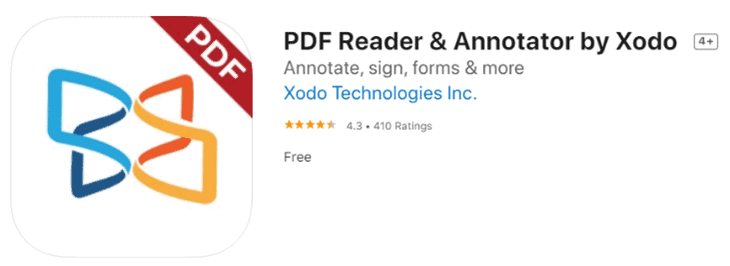
How to Open a PDF in Xodo
In Xodo, you can open a PDF from the downloaded files on your phone or from a cloud storage such as Google Drive. When first using Xodo, you will need to connect it to Google Drive. Click the “Browse” button on the bottom right corner. Look under “Locations”. You iPhone you can choose iCloud Drive, On My iPhone, or (if connected) Google Drive.
Click “Google Drive” or where you have saved your pattern files. Find the file and click open. You should now be able to view the PDF pattern file in Xodo.
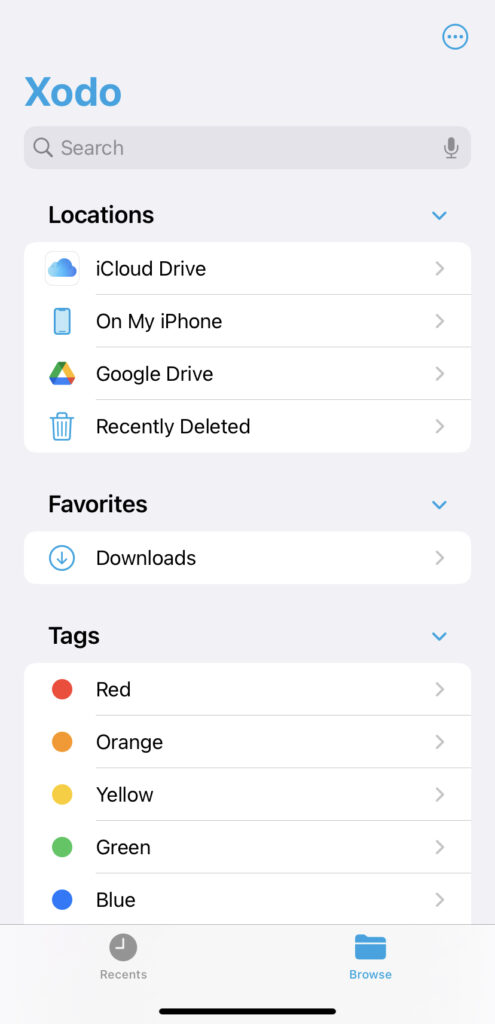
How to Access Layers in Xodo
Where are the layers? Xodo does have the ability to select layers in a PDF pattern file. When holding the phone in portrait mode, select the bottom left icon in the view panel that looks like a box with a list under it. A screen with four icons will appear. The last icon that looks like stacked papers is the layers button. Click this button and the layers in the PDF will appear. Use the toggle switch to select which layers you want to view. Keep the calibration grid (if a pattern has one), so you can finger zoom correctly on the pattern.
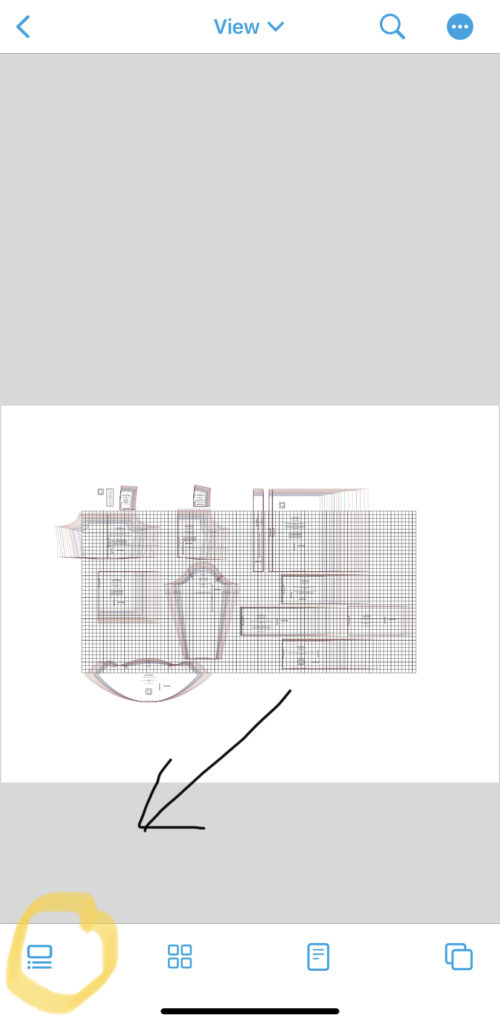
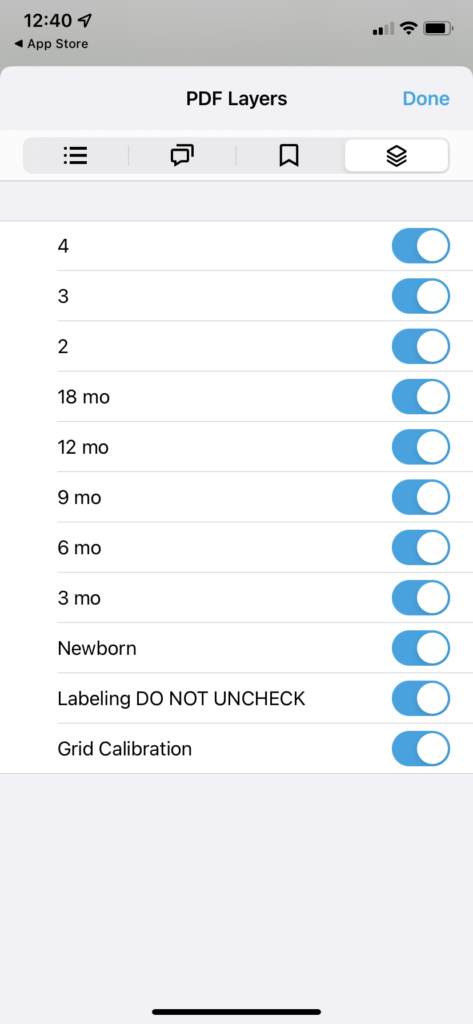
Ensuring Accurate zoom
There is no mobile phone app currently that allows you to type a zoom percentage. Affinity Designer for iPad will allow you to type zoom.
You will need to finger zoom using the calibration grid on the pattern until the squares line up correctly on your cutting mat. You can also use a ruler to measure the accuracy of the squares. Once you have set your zoom it should remain even if you close the app or the screen goes off and your phone locks.
If your pattern does not have a calibration grid, there are two options to ensuring accurate zoom. Use option 2 if you cannot import a page from PDF in Xodo.
Option 1: Add Calibration Page
First, make sure Xodo is set to “Vertical Scrolling” in settings. The triple dot button will bring up a menu. Select “View Settings” and make sure “Vertical Scrolling” is on.
Next, add the calibration document to your PDF pattern by clicking on the … on the top corner of Xodo. Select Add Pages> *Import pages from PDF. Choose the calibration page and it will be added to the document. Use this page to zoom to the correct size on your cutting mat grid.
*This is now a premium feature. You will not be able to import pages from PDF without a subscription. However, most projector file patterns do have a calibration layer now.
If the pattern doesn’t have a calibration layer, you can draw a rectangle to calibrate to.
When you scroll back to the pattern pages, the zoom will remain constant. You can confidently cut.
Option 2: Draw a line
If you are like me, then “import pages from PDF” did not appear when I chose to “Add pages”. In this case, you will need to do a workaround.
You will use the “Measure” feature in Xodo to draw a line on the document and measure on your projection. Select the “View” dropdown menu and choose “Measure”. Click on the ruler on the left and drag your finger to draw a line on your pattern.
When you first draw it, the line can be difficult to see. Click on the line and choose “Style”. Increase the thickness of the line and change the color as desired. Make sure your scale is set to 1 inch = 1 inch (or 1 cm = 1 cm for metric users). I like to leave “snapping” on so that it snaps to the nearest inch. Have the precision on to the nearest whole number to make measuring easier.
Draw a line about 10-15 inches to give you a good measurement check on your projection. After you have drawn your line, you can select it and make it bigger as needed. The measurement number on the line will remain accurate.
Now look at your projection image and measure the projected line that you drew. Finger zoom on your mobile until that line measures accurately on the projection. Once it does, you are ready to cut! Use the video below and play it “picture in picture” to follow along with the written instructions and video.
Reverse Colors in Xodo
Reversing colors in Xodo can help with lines that may be difficult to see. This can be done by switching to “night mode” in Xodo or “inverted colors” mode from phone accessibility settings.
To switch to night mode in Xodo, make sure you are in “View” mode on your pattern. Next, select the three dot button on the top corner and choose “View settings” with the reading glasses image. Under color mode select “dark mode”. This will invert the colors to have a black background. (View settings is also where you rotate pages!)
How to Annotate Patterns Using Your Phone
Do you want to make pattern changes on your phone? If your like me, you often need one pattern size for width and one pattern size for height. Making these changes, and many more, is possible using Xodo. Draw tools can be found in the annotation and measurement views! You can make notes on patterns, draw lines, and more.
The draw tool allows you to free hand draw. Measurement tools will create straight lines to scale. Annotation allows you to add notes, highlight text, and make comments.
Conclusion
Pattern projecting from a phone is very doable. With these tips and tricks you are sure to be up and running using a projector to project patterns from your phone in no time. If not being able to connect a laptop or computer has been holding you back from this amazing movement in sewing, then its time to move forward!
That’s the basics of how to use a phone for pattern projecting! But I always say the best way to learn is by DOING! So, jump in and download the Xodo app for free! Then, you can start looking at the patterns directly from your phone and giving all the features mentioned here a try! Soon, you’ll be on your way to being an Xodo master!
Thanks for reading! If you found this helpful, share with a friend!


